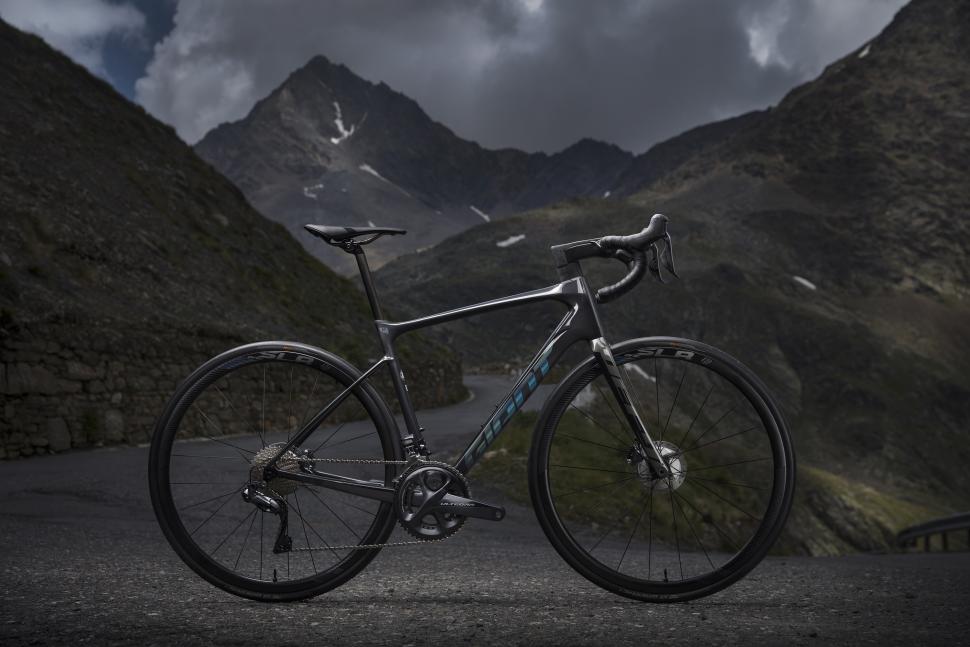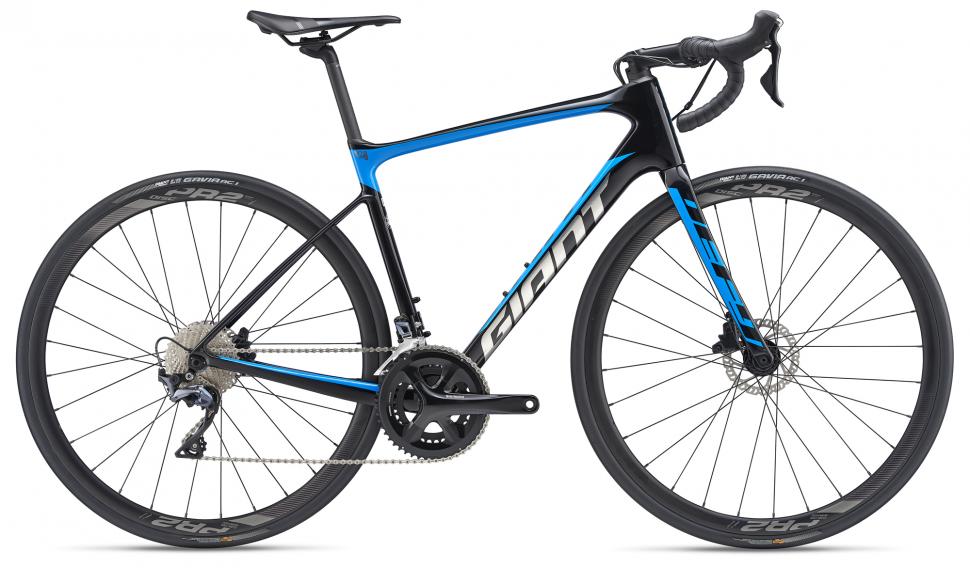- News
- Reviews
- Bikes
- Components
- Bar tape & grips
- Bottom brackets
- Brake & gear cables
- Brake & STI levers
- Brake pads & spares
- Brakes
- Cassettes & freewheels
- Chains
- Chainsets & chainrings
- Derailleurs - front
- Derailleurs - rear
- Forks
- Gear levers & shifters
- Groupsets
- Handlebars & extensions
- Headsets
- Hubs
- Inner tubes
- Pedals
- Quick releases & skewers
- Saddles
- Seatposts
- Stems
- Wheels
- Tyres
- Tubeless valves
- Accessories
- Accessories - misc
- Computer mounts
- Bags
- Bar ends
- Bike bags & cases
- Bottle cages
- Bottles
- Cameras
- Car racks
- Child seats
- Computers
- Glasses
- GPS units
- Helmets
- Lights - front
- Lights - rear
- Lights - sets
- Locks
- Mirrors
- Mudguards
- Racks
- Pumps & CO2 inflators
- Puncture kits
- Reflectives
- Smart watches
- Stands and racks
- Trailers
- Clothing
- Health, fitness and nutrition
- Tools and workshop
- Miscellaneous
- Buyers Guides
- Features
- Forum
- Recommends
- Podcast
TECH NEWS
 Full bike, Credit - Sterling Lorence Photo
Full bike, Credit - Sterling Lorence PhotoAll new Giant Defy launches, featuring D-Fuse handlebar and Giant’s new power meter included on the top model
Giant have launched the 2019 version of their Defy endurance road bike, with the D-Fuse compliance technology first seen on their seatposts now featuring on the handlebars too. The top-of-the-range Defy Advanced Pro 0 also comes with Giant’s new Power Pro dual-sided power meter included, with the price point set to be game-changing.
Guide to Giant's 2018 road bikes
15 of the best 2018 disc brake endurance bikes
The Defy is Giant’s most popular road bike, and while it’s best known for all-day comfort and relaxed geometry that appeals to beginners and experienced endurance cyclists alike, the new features reposition the Defy as a proper performance machine that will take you far and wide. Aesthetically a big change is the Contact SL Stealth stem that features on the Defy Advanced Pro models, which allows for a cleaner look up front and cable integration that can also be found on Giant’s Propel aero road bike.
While its this that might initially turn heads, the bigger story is Giant’s new D-Fuse handlebars to allow for extra compliance and rider comfort. Giant’s D-Fuse technology began on their carbon seatposts, allowing for a very small amount of travel to absorb shock and vibrations at the rear to give more control over rough roads. The D-Fuse seatposts were first specced on Defy bikes in 2015 and appear across the new range, and the handlebars are available in composite or aluminium versions. The small bit of flex gives you a claimed 10% of downward compliance when pushing on the bars, however Giant say it’s also 30% stiffer when pulling up on the bars compared to their rounded Contact SLR composite handlebars. In fact, Giant’s senior global road category manager Nixon Huang says that the new Defy was actually shown to have the same pedalling stiffness as the Propel during in-house testing.
The frame geometry is largely unchanged, with the most notable update being an extra 5mm of bottom bracket drop to accommodate wider clearance. Elsewhere it’s almost identical to the previous Defy, with a 73.5 degree seat angle, 72.5 degree head angle and a 54.5cm top tube on a size medium frame adding up to a bike made for munching the miles.
All the new frames are disc brake only, optimised for the latest flat mount and 12mm thru-axle standards. It can take up to 32mm tyres, and off the peg all bikes in the range come with tubeless-ready wheels and Giant Gavia tubeless tyres.
The new Power Pro power meter
It’s perhaps surprising that Giant chose to launch their new power meter on a bike more associated with weekenders and commuters than competitive riders, but this again reiterates that the Defy is fully aimed at performance cycling, with all the add-ons you’d want to get the most out of your training; therefore a dual-sided crank-based power meter ain’t a bad place to start, and the Power Pro looks bang up to date with no compromises compared to current competitor products… “Power for all”, so say Giant.
It’s fully integrated with left and right crank arm sensors and pairs with any ANT+ GPS units, and Giant have developed their own proprietary algorithm that can affect strain gauge data. It compensates for weather variations and ‘noise’ from other nearby devices that could make readings inconsistent. Another neat feature is the accelerometer that detects cadence without the use of a magnet switch. The sensor collects multiple cadence data points throughout the pedal stroke, which means the Power Pro can also calculate pedalling angles, force position and help you evaluate pedalling efficiency.
You get 150 hours on a single charge from the rechargeable battery, and there’s an LED indicator on the unit that shows you the battery level. It also has a fully waterproof casing that has been impact tested to ensure durability. Giant’s RideLink app is used to update the firmware, and you can also calibrate it here too.
Initially the Power Pro will just be available on the new Defy, but Giant do plan to release it as an aftermarket product in the future.
The Defy range and pricing
The Defy will be available in six models, three Defy Advanced Pro and three Advanced options. The Advanced Pro 0 has a full Ultegra Di2 hydraulic groupset (there's no Dura-Ace option) with a mid-compact chainset, the Giant power meter, composite D-Fuse bars and seatpost, 28mm Giant Gavia tubeless tyres and Giant’s SLR 1 disc wheelset.
The Advanced Pro 1 loses the power meter and has mechanical Ultegra with compact chainrings, but the spec is the same as the top model elsewhere, while the Advanced Pro 2 has a full Shimano 105 groupset with all the higher end components except for an aluminium D-Fuse bar instead of the SLR composite version. All Advanced Pro bikes come with the Contact SL Stealth stem.
The Advanced 1 has the Giant P-R2 wheelset and Ultegra shifters and derailleurs, but instead has Giant’s own Conduct brake system developed with TRP, hydraulic with a cable-actuated cylinder. This spec was chosen by Giant in the UK to bring the Advanced 1 down to the £2,000 price point, which will make it one of the best value bikes out there with Ultegra components.
The final two in the range are the Advanced 2 and 3 that have mechanical disc brakes, with Shimano 105 and Tiagra groupsets respectively. The Advanced bikes all have the Connect stem, losing some of the super clean front end cable integration that the Contact SL Stealth steam provides.
UK pricing is set to be confirmed next week, but we have most of the US prices and if the conversions are like-for-like, the top end Defy Advanced Pro 0 at $5,300 could come in at close to the £4K price point. This would break new ground in pricing for off-the-shelf power-equipped bikes, with no other options from any brand including Giant coming close at the time of writing. Giant’s own Propel with a Dura-Ace power meter comes in at £7,200, and if you want a Specialized S-Works Tarmac SL6 with power that will set you back £8,500.
Elsewhere the Defy Advanced Pro 1 will be $3,600, the Advanced 1 is $2,400, the Advanced 2 is $2,000 and finally the Advanced 3 will be $1,750; we’ll update this article with UK prices as soon as we get them. We’ve also just returned from the Italian Alps where we were lucky enough to test the Defy Advanced Pro 0 over two epic rides, so check back for our first ride report soon!
Jack has been writing about cycling and multisport for over a decade, arriving at road.cc via 220 Triathlon Magazine in 2017. He worked across all areas of the website including tech, news and video, and also contributed to eBikeTips before being named Editor of road.cc in 2021 (much to his surprise). Jack has been hooked on cycling since his student days, and currently has a Trek 1.2 for winter riding, a beloved Bickerton folding bike for getting around town and an extra beloved custom Ridley Helium SLX for fantasising about going fast in his stable. Jack has never won a bike race, but does have a master's degree in print journalism and two Guinness World Records for pogo sticking (it's a long story).
Latest Comments
- mitsky 1 sec ago
Many drivers (especially of large cars) park inconsiderately for years, everywhere....
- quiff 19 min 18 sec ago
This is a news article, not a review. Ok, so some other outlets have done a review already - but this isn't purporting to be one.
- mdavidford 42 min 20 sec ago
I suspect that may have been deliberate. I'm pretty sure no-one would suspect Tom_77 of being a snail either....
- mdavidford 55 min 5 sec ago
They have a point - the lack of investment in mental health services is a problem.
- dubwise 59 min 42 sec ago
How can that be imposed, when road cycling is on open roads?
- Bmblbzzz 1 hour 25 min ago
Engagement is definitely key. ...
- Secret_squirrel 4 hours 6 min ago
Thats if you believe that a slightly bigger bearing surface translates in any meaningful way to "pedaling stiffness" which to my mind is the...
- chrisonabike 4 hours 11 min ago
Everyone carrying more / brighter searchlights will fix things? Perhaps it helps sometimes, but I think this leads to other issues. We're already...
- SecretSam 4 hours 13 min ago
Lake's naming and sizing: never knowingly comprehensible. Good shoes, baffling range.





Add new comment
7 comments
I like the idea of power meters, I just don't like what they're going to show me.
I have the same relationship with my online banking app.
Love this bike, thinking of getting the 2021 version...
but also love this bike, the Strael
Both have amzing design feature to aid comfort on long rides...
but which to go for?
You make it sound like the D-Fuse seatposts are suspension seaposts, which they are not. Giant have simply created a marketing term for a simple engeering solution, namely changing the shape of the post (and now handlebars) from round to a D shape, thus allowing it to flex more in a particular direction.
What I like about that is that it's such a simple engeering solution, with the marketing guys having to come up with a way of selling it afterwards, unlike some of what Specialized and Trek come out with, which sometimes strike me a things designed to be highly visible and therefore even more easily marketed, as much as decent solutions to problems (e.g. Zertz inserts).
To me travel just means 'movement', so I used the word travel instead of flex in this instance... if that's down to the marketing guys embellishing a simple solution and influencing my copy a little then I guess they've done a good job!
Regardless of their origin, I have a softspot for Giant bike....they've supported pro-cycling for a long time - they should release one in the Deutsche Telekom livery to appeal to us old-timers....When my Litespeed dies....
"the top end Defy Advanced Pro 0 at $5,300 could come in at close to the £4K price point."
You mean 5k.
The Defy SL1 last year was $5600 that magically transformed to £5,249. $5.3k > £4k this year isn't happening.